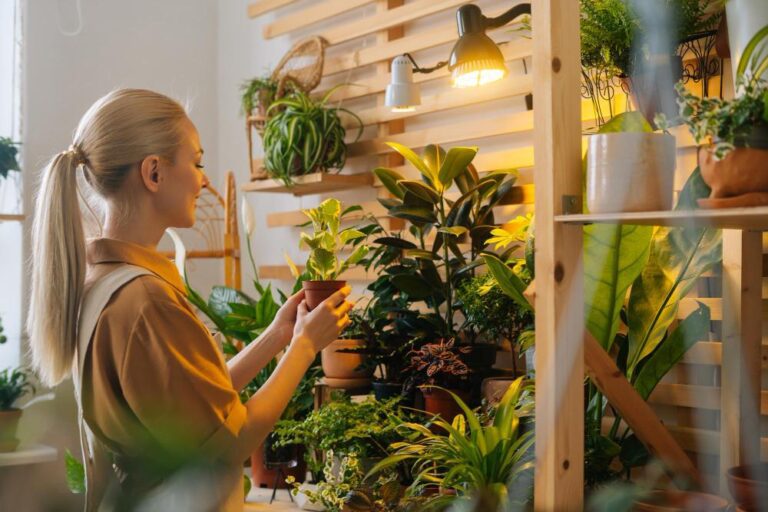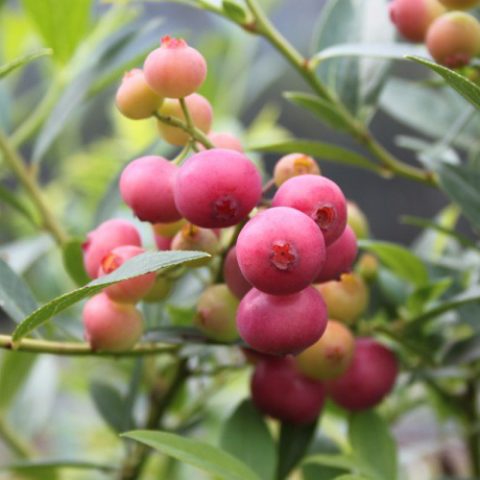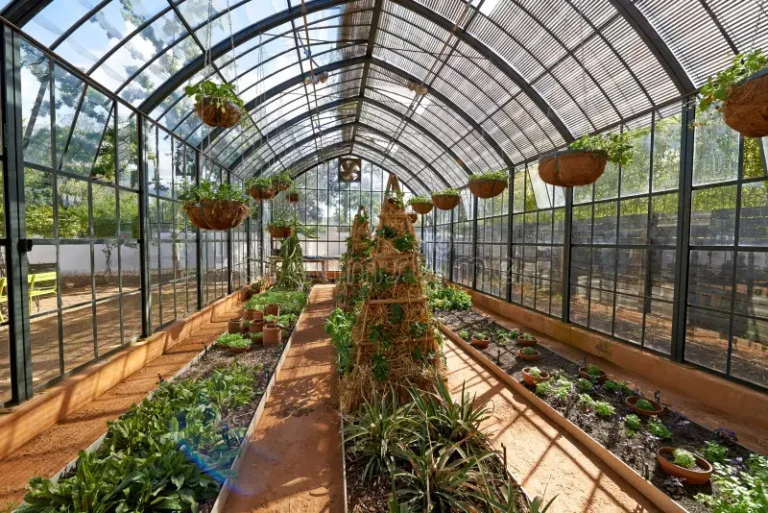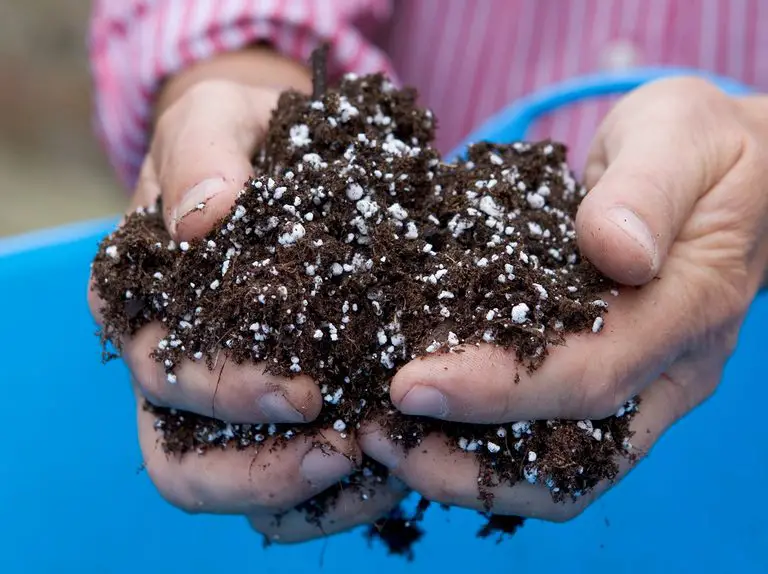Arabian Jasmine: Cultivating Fragrant Blooms
Table of Contents
2. Selecting the ideal location for planting Arabian Jasmine
Arabian Jasmine, also known as Jasminum sambac, is a beautiful flowering plant that requires specific growing conditions to thrive. Selecting the ideal location for planting Arabian Jasmine is crucial for its overall health and performance. This aromatic plant flourishes in warm and tropical climates, with temperatures ranging from 60°F to 86°F (15°C to 30°C).
When choosing a location, it is essential to consider the amount of sunlight the Arabian Jasmine will receive. This plant requires at least 6 hours of direct sunlight per day to produce an abundance of vibrant blooms. Therefore, it is advisable to select a spot that receives ample sunlight, such as a south-facing area of your garden or a raised bed with unobstructed access to sunlight. It is important to note that Arabian Jasmine can tolerate partial shade, but it may affect its flowering capability. By ensuring an optimal light exposure, you can encourage the plant’s growth and enhance its ornamental value in your garden.
3. Choosing the right soil composition for Arabian Jasmine
To ensure the successful growth of Arabian Jasmine, it is crucial to select the right soil composition. This beautiful flowering plant thrives in well-draining soil that is rich in organic matter. You want the soil to retain moisture without becoming waterlogged, as excess moisture can lead to root rot and other diseases.
A pH level between 6 and 7 is considered ideal for Arabian Jasmine. This slightly acidic to neutral range provides the optimal conditions for nutrient absorption. Conducting a soil test can help you determine the pH level and make any necessary adjustments. If the soil is too acidic, you can add lime to raise the pH. Alternatively, if the soil is too alkaline, sulfur or peat moss can be incorporated to lower the pH.
By understanding the specific soil preferences of Arabian Jasmine and providing the right conditions, you can create an environment that promotes healthy growth and abundant blooms. Remember to consider the drainage, organic content, and pH level of the soil, as these factors play a significant role in the overall well-being of your Arabian Jasmine plants.
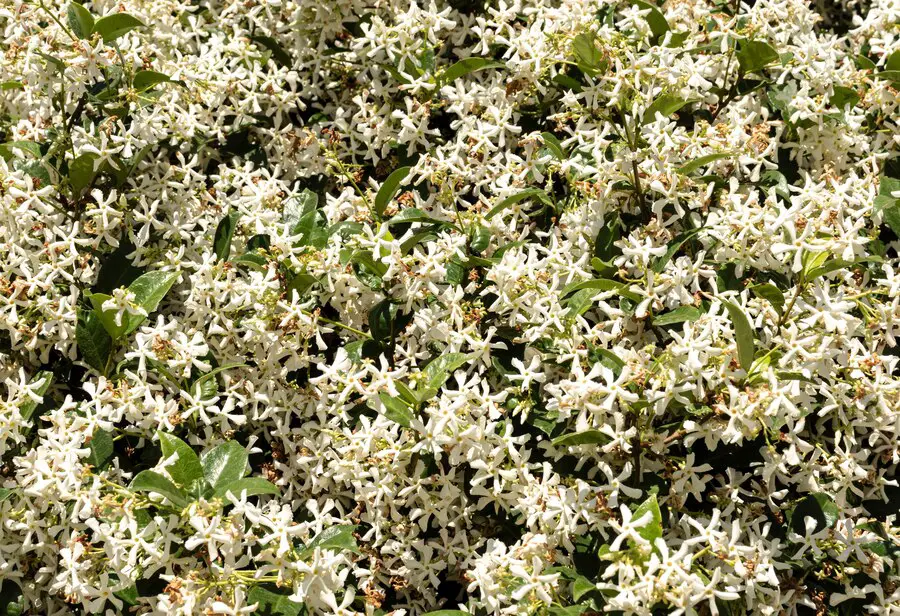
4. Providing adequate sunlight for optimal growth of Arabian Jasmine
To ensure the optimal growth of Arabian Jasmine, providing adequate sunlight is crucial. This beautiful flowering plant is native to tropical regions where it thrives in bright, direct sunlight. Ideally, Arabian Jasmine should receive at least six to eight hours of direct sunlight every day.
Sunlight plays a vital role in the photosynthesis process, where plants convert sunlight into energy. With sufficient sunlight, Arabian Jasmine can produce ample energy to fuel its growth, promoting healthy foliage and abundant blooms. Insufficient sunlight can result in weaker plants with sparse foliage and fewer flowers.
When selecting a location for your Arabian Jasmine, choose a spot that receives maximum sunlight throughout the day. Consider areas with minimal shade from buildings, trees, or other structures. To maximize the sunlight exposure, avoid placing the plant in areas with obstructions that may cast shadows over it.
In addition to direct sunlight, Arabian Jasmine also thrives in warm temperatures. Ensure that the chosen location provides the ideal temperature range for this plant, typically between 60°F to 75°F (15°C to 24°C). By providing the right combination of sunlight and temperature, you can create the perfect conditions for your Arabian Jasmine to flourish.
5. Watering techniques and frequency for Arabian Jasmine
Arabian Jasmine, also known as Jasminum sambac, is a delicate and highly fragrant flowering plant that requires regular and adequate watering for optimal growth. The key to successful watering lies in finding the right balance, as overwatering or underwatering can lead to various issues and even the death of the plant.
When it comes to watering Arabian Jasmine, it is crucial to pay attention to the soil moisture level. The soil should be moist but not waterlogged, as excessive water can cause root rot and other fungal diseases. On the other hand, allowing the soil to completely dry out can result in wilting and stunted growth. To determine the appropriate watering frequency, you can perform a simple soil moisture test by inserting your finger about an inch into the soil. If it feels dry, it’s time to water. However, if it feels damp, it’s best to wait before watering again. This ensures that the plant’s roots have enough access to moisture without being saturated.
In addition to monitoring soil moisture, it is equally important to consider the environmental factors that can affect the water needs of Arabian Jasmine. Factors such as temperature, humidity, and sunlight exposure can influence the rate of evaporation and the plant’s overall water requirements. During hotter and drier months, you may need to increase the frequency of watering, while during cooler and more humid periods, you may need to adjust accordingly. It’s also worth noting that potted Arabian Jasmine plants may generally need more frequent watering compared to those planted in the ground, as the potting mix tends to dry out faster. By carefully observing and responding to these factors, you can provide the appropriate watering techniques and frequency for Arabian Jasmine, ensuring its healthy growth and abundant blooms.
Here’s a comprehensive guide on watering techniques and frequency for Arabian Jasmine:
| Aspect | Guidelines |
|---|---|
| Humidity | Arabian Jasmine thrives in high humidity levels. If you live in a dry climate or during winter when indoor heating dries out the air, regular misting of the plant is beneficial. |
| Temperature | Maintain warm temperatures between 60-75°F (15-24°C) for optimal growth. Extreme cold or heat can affect water absorption. |
| Soil Type | Use well-draining soil that retains moisture without becoming waterlogged. |
| Pot Size | Consider pot size – a larger pot retains more moisture and requires less frequent watering. |
| Frequency | Water when the top inch of soil feels dry to the touch. Typically, this translates to once or twice a week, depending on environmental conditions. Avoid letting the soil dry out completely to prevent root damage. |
| Water Amount | Ensure thorough watering to moisten the entire root system. Avoid overwatering to prevent root rot. |
| Tips | – Use room temperature water to avoid shocking the roots. – During winter (dormant period), reduce watering frequency. |
Remember, maintaining the right balance is crucial for your Arabian Jasmine’s health!
6. Fertilizing Arabian Jasmine: Dos and don’ts
When it comes to fertilizing Arabian Jasmine, there are some key dos and don’ts to keep in mind. First and foremost, it is important to choose a fertilizer that is specifically formulated for flowering plants. Look for a balanced fertilizer with an N-P-K ratio (nitrogen, phosphorus, and potassium) of around 10-10-10 or 14-14-14. This will provide the necessary nutrients to support healthy growth and abundant blooming.
Dos:
– Do fertilize Arabian Jasmine during the growing season, which is typically from spring to early fall. This will provide the plant with the nutrients it needs to thrive and produce beautiful blooms.
– Do follow the instructions on the fertilizer packaging for application rates and frequency. Overfertilizing can lead to salt build-up in the soil, which can damage the plant’s roots.
– Do consider using slow-release fertilizers that provide a steady supply of nutrients over an extended period of time. This can help prevent the plant from being overwhelmed with too much fertilizer at once.
Don’ts:
– Don’t fertilize Arabian Jasmine during the winter months when the plant is dormant. Fertilizing during this time can disrupt the plant’s natural growth cycle and lead to weakened or stunted growth.
– Don’t apply fertilizer directly to the leaves or flowers of the plant. Instead, focus on applying the fertilizer to the soil around the base of the plant. This will allow the roots to absorb the nutrients effectively.
By following these dos and don’ts, you can ensure that your Arabian Jasmine receives the right nutrients at the right time, resulting in lush foliage and abundant, fragrant blooms.
7. Pruning and shaping Arabian Jasmine for a desired form
To maintain a desired form and promote healthy growth, proper pruning and shaping techniques are essential for Arabian Jasmine (Jasminum sambac). Pruning not only helps to control the plant’s size but also encourages the development of new branches and abundant blooms. One important aspect to consider when pruning is the timing. It is best to prune Arabian Jasmine immediately after it finishes flowering, typically in late spring or early summer. This allows the plant to recover and produce new growth before the next blooming season.
When pruning Arabian Jasmine, it is advisable to remove any dead, damaged, or diseased branches first. This helps to enhance the overall appearance and health of the plant. To shape the plant, selective pruning can be done to maintain a desired form, such as encouraging a bushy shape or training it to climb a trellis or stake. Prune the branches just above a node, which is the point where a leaf or a bud is attached to the stem. This stimulates new growth and prevents the plant from becoming lanky or leggy.
Note: These paragraphs provide a brief overview of pruning and shaping techniques for Arabian Jasmine. Further specific instructions and techniques can be discussed in subsequent sections, such as different pruning methods and tools or training techniques for climbing forms.
8. Protecting Arabian Jasmine from pests and diseases
Arabian Jasmine is a beautiful and fragrant flowering plant that can add a touch of elegance to any garden. However, like many other plants, it is susceptible to pests and diseases that can hinder its growth and vitality. As a gardener, it is important to take proactive measures to protect your Arabian Jasmine from these potential threats.
One common pest that can wreak havoc on Arabian Jasmine is aphids. These tiny insects feed on the sap of the plant, causing leaves to curl and distort. To combat aphids, you can introduce natural predators such as ladybugs or lacewings to the garden. Alternatively, you can create a homemade insecticidal soap by mixing liquid dish soap with water and spraying it onto the affected areas. This will effectively suffocate and eliminate the aphids without harming the plant.
Another common issue for Arabian Jasmine is fungal diseases, such as powdery mildew or leaf spot. These diseases often thrive in humid conditions and can spread rapidly if left unchecked. To prevent fungal infections, make sure to provide adequate air circulation around the plant by spacing them apart correctly. Additionally, avoid overhead watering as it can create a moist environment that favors fungal growth. If you notice signs of fungal infection, remove and dispose of the affected leaves immediately to stop the spread of the disease. You can also apply a fungicide specifically formulated for ornamental plants, following the instructions provided, to effectively combat the fungus.
Here’s a guide on protecting Arabian Jasmine from pests and diseases:
| Pest/Disease | Description | Prevention and Control |
|---|---|---|
| Aphids | Small, soft-bodied insects that suck sap from leaves and stems. | – Regular inspections: Check for signs of infestation. – Hand-picking: Remove visible aphids. – Insecticidal soaps or oils: Use to control aphids. |
| Spider Mites | Tiny pests that create web-like structures on leaves. | – Increase humidity: Spider mites thrive in dry conditions. – Neem oil or insecticidal soap: Apply to control spider mites. |
| Mealybugs | White, cotton-like insects that attach to stems and leaves. | – Inspect regularly: Look for signs of mealybugs. – Remove affected parts: Prune infested areas. – Neem oil: Use as a natural insecticide. |
| Scale Insects | Small, oval-shaped bugs that attach to leaves or stems. | – Monitor: Check the undersides of leaves. – Horticultural oils: Suffocate scale insects. – Chemical pesticides: Use as a last resort. |
Remember to maintain proper care for your Arabian Jasmine, including adequate sunlight, well-draining soil, and regular watering. Healthy plants are less susceptible to pests and diseases!
9. Propagation methods for expanding your Arabian Jasmine collection
Propagating Arabian Jasmine can be a rewarding endeavor for gardening enthusiasts looking to expand their collection. There are several propagation methods that can be used to successfully grow new plants from existing ones.
One common method is through stem cuttings. Choose healthy stems that are about 6-8 inches long and remove any flowers or buds. Dip the cut end of the stem in a rooting hormone to encourage root development and then plant it in a well-draining potting mix. Keep the soil moist and place the cutting in a warm and bright location, but away from direct sunlight. With proper care, roots should start to form within a few weeks, indicating successful propagation.
Another propagation method is through layering. Select a healthy and flexible stem that is close to the ground. Gently wound the stem by making a small cut or removing a small section of the bark. Apply rooting hormone to the wounded area and cover it with moist soil or a mixture of soil and peat moss. Keep the soil consistently moist and wait for roots to develop, which may take a few months. Once roots are established, carefully sever the new plant from the parent plant and transplant it to a desired location.
By utilizing these propagation methods, gardening enthusiasts can easily expand their Arabian Jasmine collection and enjoy the beauty and fragrance of these exquisite plants in their gardens.
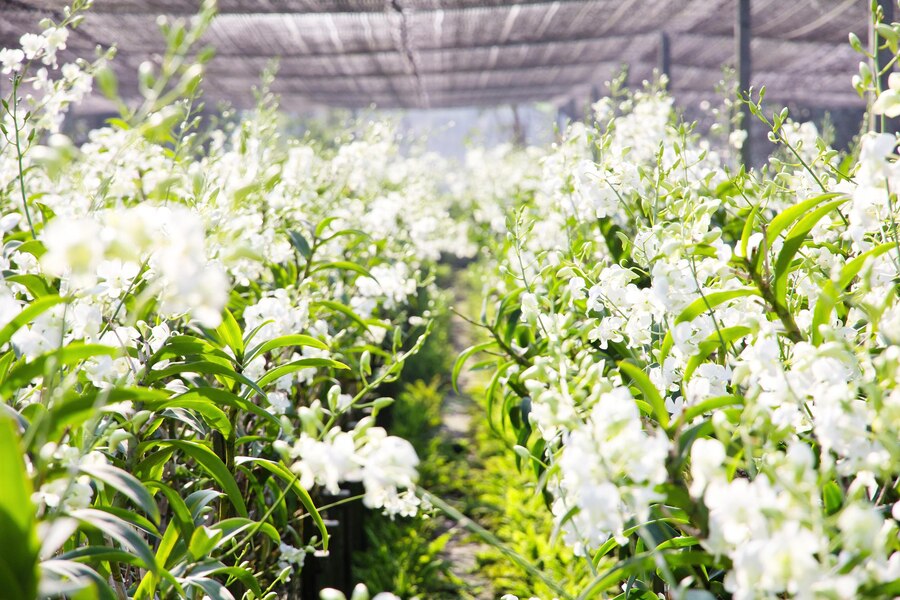
10. Transplanting Arabian Jasmine: Tips for a successful relocation
Transplanting Arabian Jasmine: Tips for a successful relocation
When it comes to transplanting Arabian Jasmine, careful planning and execution are key to ensure successful relocation. This fragrant and delicate plant requires special attention to maintain its health and vibrant growth during the transition.
First and foremost, timing is crucial when transplanting Arabian Jasmine. The ideal time to transplant is during the dormant season in late winter or early spring when the plant is not actively growing. This allows the jasmine to adjust to the new environment without added stress. It is important to choose a day with mild weather, preferably with overcast skies, to minimize shock to the plant’s root system.
Before digging up the jasmine, it is essential to prepare the new planting hole. The hole should be wide and deep enough to accommodate the root ball without cramping or bending the roots. Amend the soil with compost or organic matter to improve drainage and fertility. As Arabian Jasmine prefers slightly acidic soil with a pH range of 6.0 to 7.0, it is recommended to test the soil beforehand and make necessary adjustments if needed.
11. Supporting Arabian Jasmine with appropriate trellises or stakes
When it comes to supporting Arabian Jasmine, choosing the right trellises or stakes is essential to ensure proper growth and development. These climbing plants have delicate and wiry stems that need support as they reach for heights. By providing the right framework, you can enhance their aesthetic appeal and protect them from damage caused by wind or heavy blooms.
Trellises are an excellent choice for supporting Arabian Jasmine as they allow the plant to climb and spread naturally. You can opt for wooden or metal trellises, depending on your preference and the overall design of your garden. When selecting a trellis, ensure it is sturdy enough to hold the weight of the plant and has enough space between the slats to allow the Jasmine’s tendrils to intertwine and grip onto the structure. This will encourage upward growth while maintaining the plant’s natural form. For a more artistic touch, you can even choose decorative trellises that add a touch of elegance to your garden space.
Another option for supporting Arabian Jasmine is using stakes. Stakes are particularly useful for younger and more delicate plants that require additional stability to grow straight and tall. By carefully placing stakes near the base of the plant and gently tying the stems to the vertical supports, you can guide its growth and prevent it from leaning or bending under its weight. Make sure the stakes are made of a durable material such as bamboo or metal and are at least one-third the height of the plant for optimal support. Additionally, it’s important to secure the stems loosely to the stakes using plant ties or soft twine, allowing enough room for growth while preventing damage to the stems.
With the right trellises or stakes, you can provide the necessary support for your Arabian Jasmine, ensuring a stunning display and healthy growth. Take the time to assess your plant’s needs and select the most suitable option to create a visually appealing garden that showcases the beauty of these exquisite climbers.
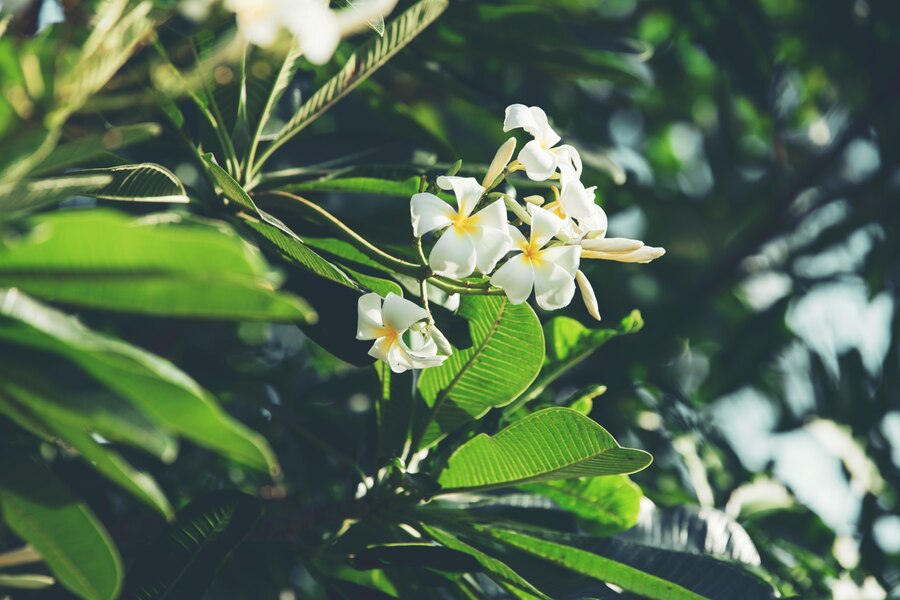
12. Enhancing the fragrance of Arabian Jasmine through companion planting
Enhancing the fragrance of Arabian Jasmine through companion planting can be a rewarding and effective way to create a sensory-pleasing garden. By strategically selecting companion plants that complement the aromatic qualities of the Arabian Jasmine, you can intensify its fragrance and enhance the overall appeal of your garden.
One excellent companion plant for Arabian Jasmine is lavender. Known for its soothing scent and vibrant blossoms, lavender not only adds visual interest to the garden but also complements the sweet aroma of Arabian Jasmine. Placing lavender near Arabian Jasmine can create a delightful and harmonious blend of scents, making your garden a true olfactory paradise. Additionally, both plants prefer similar growing conditions, such as well-drained soil and plenty of sunlight, making them compatible companions in the garden.
Another companion plant that pairs well with Arabian Jasmine is gardenia. Gardenias are renowned for their intoxicating fragrance, and when combined with the sweet scent of Arabian Jasmine, they can create an enchanting and captivating aroma in your garden. Their similar preferences for acidic soil and partial shade make them an ideal pairing, ensuring both plants thrive and contribute to the overall fragrance of the garden.
When selecting companion plants for Arabian Jasmine, it is crucial to consider the needs and preferences of both plants to create a harmonious environment. By carefully choosing complementary scents and compatible growing conditions, you can elevate the fragrance and aesthetics of your garden, making it a mesmerizing sensory experience for all who visit.
13. Harvesting and preserving Arabian Jasmine blooms for aromatic use
When it comes to harvesting and preserving Arabian Jasmine blooms for aromatic use, timing is crucial. It is recommended to harvest the blossoms early in the morning when the fragrance is at its peak. Select flowers that have fully opened and are in their prime. Avoid harvesting wilted or damaged blooms as they may not retain their fragrance when preserved.
To preserve the aromatic essence of Arabian Jasmine, various methods can be employed. One popular method is air drying. Simply gather a bunch of freshly harvested blooms, tie them together with a string, and hang them upside down in a cool, dark, and well-ventilated area. Allow the flowers to air dry until they become brittle. Once dried, store them in an airtight container away from direct sunlight to preserve their fragrance for an extended period. Alternatively, you can also preserve Arabian Jasmine blooms by applying a pressing technique. Place the freshly harvested flowers between two sheets of absorbent paper or within the pages of a heavy book. Apply pressure by placing additional weight on top of the book and allow the blooms to dry under the pressure for a few weeks. This method helps retain the shape and vibrant color of the blossoms while preserving their aromatic qualities.
By following these steps, gardening enthusiasts can ensure the preservation of Arabian Jasmine blooms with their captivating fragrance intact, allowing them to be enjoyed in potpourris, floral arrangements, or even as natural air fresheners.
14. Troubleshooting common issues encountered while cultivating Arabian Jasmine
When cultivating Arabian Jasmine, it’s important to be aware of the common issues that may arise during the process. One such problem is yellowing leaves, which can indicate various issues such as nutrient deficiencies, overwatering, or improper soil pH. To remedy this, it is recommended to conduct a soil test to determine the nutrient levels and adjust accordingly. Additionally, make sure to water the plant appropriately, allowing the soil to dry out between watering sessions. Adjusting the soil pH to the preferred range of 6 to 7 can also help alleviate yellowing leaves.
Another common issue encountered with Arabian Jasmine is the appearance of pests such as aphids or spider mites. These insects can cause damage to the leaves and hinder the growth of the plant. To combat this problem, it is advisable to regularly inspect the plant for signs of infestation and take appropriate measures. This can involve introducing natural predators like ladybugs or using organic insecticides specifically formulated for controlling these pests. Maintaining good sanitary practices, such as removing any fallen leaves or debris, can also help prevent pest infestations and promote a healthier environment for the Arabian Jasmine.
15. Showcasing the versatility of Arabian Jasmine in various garden designs
Arabian Jasmine, renowned for its intoxicating fragrance, is a versatile plant that can add charm and elegance to various garden designs. From formal landscapes to casual cottage gardens, Arabian Jasmine effortlessly blends in, providing a touch of exotic beauty. Its compact and bushy nature makes it an ideal choice for border plantings and hedges, creating a neat and organized appearance.
In addition to its aesthetic value, Arabian Jasmine also offers practical uses in garden designs. Its thick foliage offers privacy when used as a natural fence or screen. It can also be trained to climb trellises or stakes, adding vertical interest and creating a stunning focal point. Alternatively, Arabian Jasmine can be potted and placed on patios or balconies, bringing its delightful fragrance and beauty closer to outdoor living spaces. With its versatility, Arabian Jasmine truly shines in any garden design, providing endless possibilities for creativity and personal expression. So, whether you’re aiming for a formal or informal look, Arabian Jasmine is sure to enhance the aesthetic appeal of your garden with its versatility and charm.
16. Appreciating the cultural significance and symbolism of Arabian Jasmine.
Arabian Jasmine, also known as Jasminum sambac, holds great cultural significance and symbolism across various regions of the world. This fragrant and elegant flowering plant has deep-rooted connections to traditions, celebrations, and spirituality, making it a cherished symbol in many cultures.
In the Middle East and South Asia, Arabian Jasmine is commonly associated with love, romance, and beauty. Its intoxicating scent and delicate white blossoms have been used for centuries to adorn brides and their surroundings during weddings. The flower’s alluring fragrance is believed to enhance the atmosphere of love and joy, symbolizing purity and divine blessings.
Furthermore, Arabian Jasmine has a strong presence in religious practices. In Hinduism, the jasmine flower is dedicated to the goddess Shiva and is used in temple offerings and garlands. Similarly, in Islam, the white blossoms of Arabian Jasmine hold special significance during the month of Ramadan and are often used in religious ceremonies and as a symbol of purity and spiritual enlightenment.
The cultural significance and symbolism of Arabian Jasmine extend beyond love and spirituality. In some regions, the flower is also associated with prosperity, good luck, and protection against evil spirits. It is not uncommon to find Arabian Jasmine plants adorning homes, businesses, and public spaces, serving as a visual representation of auspiciousness and positive energy.
As we delve deeper into the rich cultural tapestry of Arabian Jasmine, it becomes evident that this enchanting flower holds a sacred place in many hearts. Its beauty, fragrance, and symbolic associations transcend borders, making it a true cultural icon and a cherished botanical treasure. So, the next time you encounter the aromatic embrace of Arabian Jasmine, take a moment to appreciate the cultural significance it holds and the stories it carries through generations.
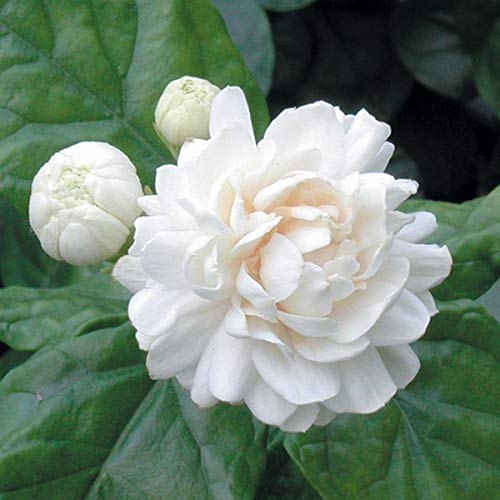
Please note that these headings can be rearranged or modified to suit the specific requirements of your blog.
As a gardener, hydroponics expert, botanist, and agronomist, I understand the importance of tailoring your gardening strategies to meet your specific needs and preferences. The headings provided can serve as a framework for your article, but don’t be afraid to customize and rearrange them to suit the specific requirements of your blog. By doing so, you can ensure that your content aligns with your target audience’s interests and provides them with the information they need to successfully cultivate Arabian Jasmine.
Remember, it’s crucial to maintain a professional tone throughout your article. This will help establish your expertise, authority, and trustworthiness in the eyes of your readers. As you craft your paragraphs, rely on scientific facts, reliable data, statistics, and quotes from credible sources to support your claims. Incorporating these elements will not only enhance the credibility of your article but also showcase your dedication to delivering accurate and trustworthy information.
Please do watch!
Can Arabian Jasmine tolerate cold temperatures?
Arabian Jasmine is a tropical plant and is sensitive to cold temperatures. It is best suited for warm climates or can be grown indoors in cooler regions.
How often should I water my Arabian Jasmine?
Arabian Jasmine prefers consistently moist soil but with good drainage. Watering frequency will depend on factors such as the climate, soil type, and season. As a general guideline, water your Arabian Jasmine when the top inch of soil feels dry.
Can I grow Arabian Jasmine in a pot?
Yes, Arabian Jasmine can be grown in a pot or container. Just ensure that the pot has good drainage holes and use a well-draining potting mix. Regular pruning may be necessary to control its growth in a confined space.
How long does it take for Arabian Jasmine to bloom?
Arabian Jasmine typically blooms in the spring and summer months. The time it takes for it to bloom can vary depending on factors like the plant’s age, growing conditions, and care. It usually takes around 2-3 years for Arabian Jasmine to start blooming.
Can I use Arabian Jasmine blooms for aromatic purposes?
Yes, Arabian Jasmine blooms are highly fragrant and can be used for their aromatic properties. They can be harvested and used in potpourri, essential oils, or simply enjoyed fresh.
How do I propagate Arabian Jasmine?
Arabian Jasmine can be propagated through stem cuttings or layering. Take 4-6 inch cuttings from a healthy plant, remove the lower leaves, and place them in a well-draining rooting medium. Keep the cuttings moist until they develop roots.
What are common pests and diseases that affect Arabian Jasmine?
Arabian Jasmine can be susceptible to pests such as aphids, whiteflies, and spider mites. Diseases like powdery mildew and root rot can also occur. Regular inspection, proper sanitation, and using organic pest control methods can help prevent and manage these issues.
Can Arabian Jasmine be grown indoors?
Yes, Arabian Jasmine can be grown indoors as a houseplant. It requires bright, indirect sunlight and consistent humidity. Proper ventilation and regular fertilization are important for its indoor growth.
Does Arabian Jasmine require a trellis for support?
Arabian Jasmine is a vine-like plant that benefits from a trellis or stakes for support. This helps it to grow upright and allows the blooms to cascade beautifully.
Are there any specific companion plants that enhance the fragrance of Arabian Jasmine?
Yes, certain companion plants like gardenias, roses, and lavender can enhance the fragrance of Arabian Jasmine when planted together. They create a pleasant aromatic combination in the garden.
What is the cultural significance and symbolism of Arabian Jasmine?
Arabian Jasmine holds cultural significance in many countries and is often associated with love, purity, and beauty. In some cultures, it is used in wedding ceremonies and religious rituals.
How can I troubleshoot common issues while cultivating Arabian Jasmine?
Some common issues with Arabian Jasmine include yellowing leaves, lack of blooming, and leaf drop. These can be caused by factors like overwatering, inadequate sunlight, nutrient deficiencies, or pest infestations. Proper care, observation, and addressing these factors can help resolve these issues.
Can Arabian Jasmine be used in different garden designs?
Yes, Arabian Jasmine is versatile and can be used in various garden designs. It can be grown as a standalone plant, as a border or hedge, on a trellis or arbor, or even in containers. Its fragrant blooms add beauty to any garden setting.
Can I transplant Arabian Jasmine to a different location?
Yes, Arabian Jasmine can be transplanted to a different location. It is best done during the cooler months and with proper care to minimize stress on the plant’s roots. Ensure the new location has suitable growing conditions for the plant.
Is Arabian Jasmine toxic to pets?
Arabian Jasmine is not considered highly toxic to pets, but it is always best to keep pets away from consuming any plant material. If ingested, it may cause mild gastrointestinal discomfort. Monitor your pets around Arabian Jasmine and contact a veterinarian if any unusual symptoms occur.

Nicole Burke is a dynamic writer at SouthElMonteHydroponics, fueled by her passion for horticulture and environmental sustainability. Armed with a degree in Environmental Science from a renowned institution, Nicole’s expertise lies in hydroponic gardening, organic farming, and biodiversity conservation. Her insatiable curiosity and love for nature drive her to explore innovative techniques in hydroponics, seeking to revolutionize the way we grow crops in urban environments. Nicole’s writing reflects her deep commitment to promoting eco-conscious practices and fostering a deeper connection between humans and the natural world. Through her engaging storytelling, she inspires others to embrace sustainable living and harness the power of hydroponics for a greener future.

